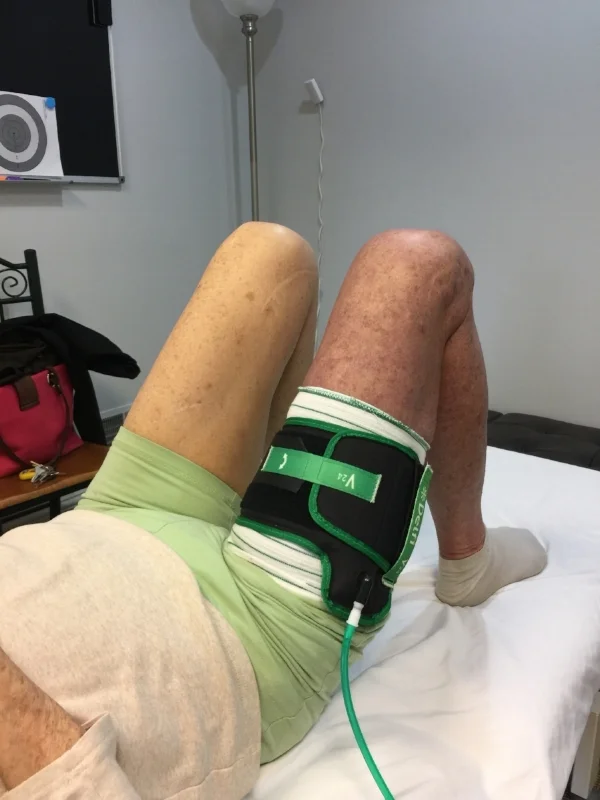I was talking with a gentleman recently and the topic of shoulder pain came up. His shoulder had been hurting for a few months, and he had been having trouble lifting and reaching over head as well as getting comfortable enough for good sleep. So he went into see his physician and got some scans that showed a partial rotator cuff tear. He was afraid that his shoulder was permanently damaged, and that he was going to need surgery. I told him that he probably would not need surgery-- physical therapy and a few home exercises would most likely get him back to normal.
Let’s take a quick look at some of the current research.
First, rotator cuff tears are pretty darn common, affecting, very conservatively, 10% of those over the age of 60 or 5.7 million people in the United States.1-2 Other research suggests that rotator cuff tears are far more prevalent—about 35% of those in their 40s, 50% of those in their 60s and 80% of those in their 80s.3
Interestingly, a rotator cuff tear can be completely pain free, with up to 96% of people being unaware that they even have an injury or abnormality!3-4 This is because most tears arise from slow, age-related changes overtime that your body adapts and gets used to. No perceived threat or danger = no pain.5
However, when the change to the rotator cuff happens suddenly (during a fall, car crash, etc.) your body has no time to adapt. That’s when you really feel it!
Rotator cuff repairs are performed on between 75,000–250,000 patients per year in the United States.6,7However, rotator cuff repairs fail at a surprisingly high-- 25% to 90%.8 But here’s the real shocker… patient satisfaction and functional outcomes are the virtually identical regardless of the repair being intact or failing!9
How can that be?
Well, Kuhn et al, 2013 thought that the physical rehabilitation post-operatively may be the actual cause of the successful recovery in most people. They looked at more than 400 patients with atraumatic full-thickness rotator cuff tears (completely ruptured tendons). Instead of surgery these patients were treated by a physical therapist for 6 weeks (averaging 8 treatments) and given a good home program of therapeutic exercises. At the 6-week follow up patients could declare themselves 1) cured, 2) improved or 3) in need of surgery.
Only 9% felt that they needed surgery.
Of those that indicated “improved” an additional 6 weeks of physical therapy (averaging 7 treatments) and home exercise were given. Afterwards, only 6% felt they needed surgery—for a total of 59/399 or about 15%.
The physiotherapy stopped at this point, but patients could continue with the home exercises. However, Kuhn et al then kept track of the patients. At 1 year an additional 6% had opted for surgery. After 2 years the numbers got a little murky with about 15% of the patients not responding, but only 5% more reported electing surgical repair sometime in that 2nd year-- for a grand total of 26%.
Meaning that somewhere between 74-79% of people got better and stayed better with just 8-15 treatments with a physical therapist over a 6-to 12-week period and some home exercises!
What that tells us is that just because someone has a rotator cuff tear it doesn’t mean they are doomed to a lifetime of pain or need surgery to get back to normal. You might want to try some physical rehabilitation though!
Your outcomes at Optimum DPT would likely be even more favorable as we are an advanced practice physical therapy clinic with Osteopractic-and Fellowship-trained physiotherapists, the only one in northern Michigan.
First, Osteopractic Physical Therapy has been found to be 57% MORE effective for shoulder conditions compared to traditional physical therapy.10 Applied to Kuhn et al findings, this suggests that your odds of success with rehabilitation alone improves to about 89-91% when working with an osteopractic physiotherapist. Incidentally, osteopractic physical therapy was also found to decrease total health care utilization by 60% and the cost of care by 35% compared to conventional physical therapy.10 (Who doesn’t like saving time and money?)
Second, fellowship-trained physical therapists (Fellows or FAAOMPTs) have been found to be more efficient at treating musculoskeletal conditions, like rotator cuff tears, and produced better functional outcomes than residency-trained and entry-level physical therapists.11 So if you have body ache or pain working with a physical therapist who is a Fellow or FAAOMPT is the way to go if there is one practicing in your area!
Finally, Optimum DPT is one of a two physical therapy clinics in Michigan (and the only one in northern Michigan) certified to provide Personalized Blood Flow Restriction Rehabilitation.11I already talked about Blood Flow Restriction Rehabilitation in an earlier blog post; but to recap, Blood Flow Restriction supercharges rehabilitation for the maximum strength and endurance gains, muscle growth and tissue healing possible, even if an injury (like a rotator cuff tear) has made you too weak to perform traditional strengthening exercises.12-13
Check out this excellent video on BFR by Performance Physical Therapy & Wellness.



